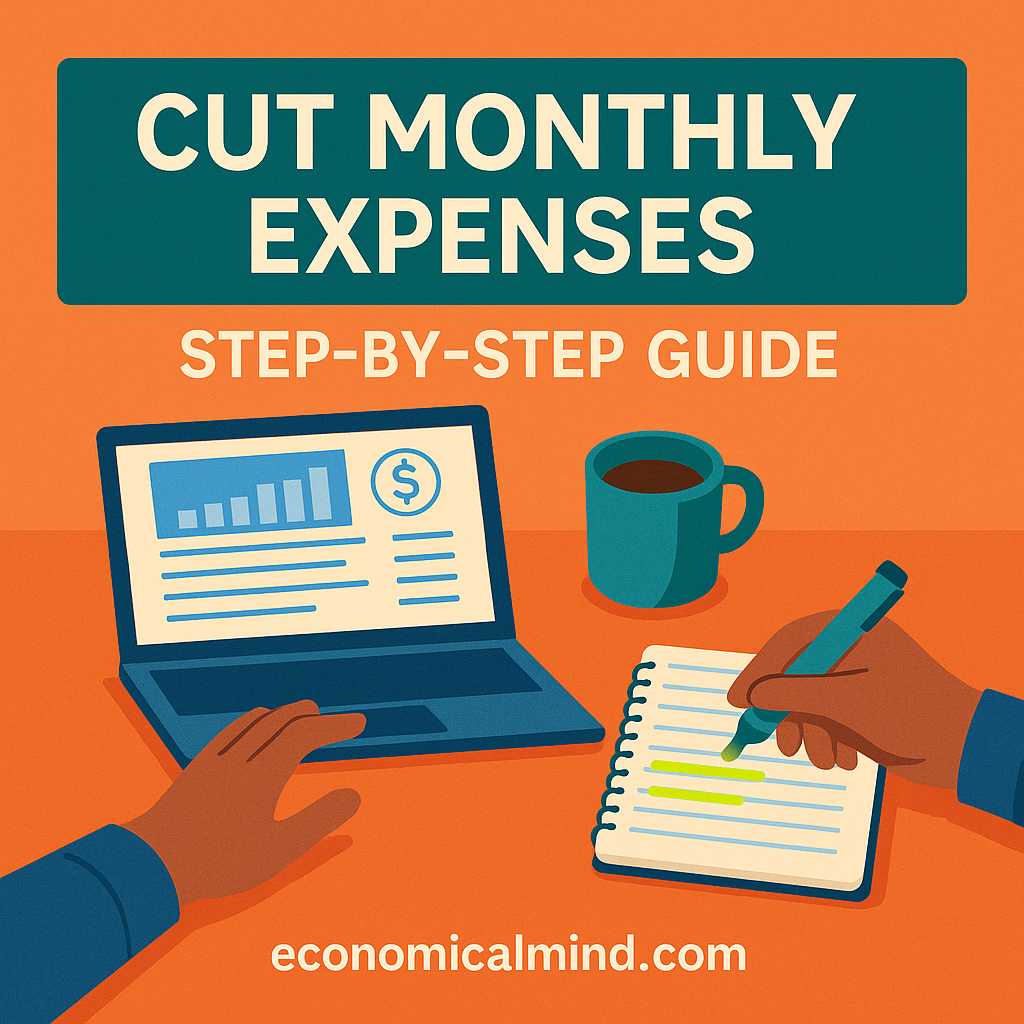
Why Cutting Expenses Matters
If you’re trying to save money, invest more, or simply get out of debt, the first place to start is by cutting monthly expenses.
Small recurring costs — streaming subscriptions, takeout, unused memberships — can quietly drain hundreds of dollars every month.
By identifying where your money goes and trimming what you don’t need, you can instantly free up cash without sacrificing the things that matter most.
Step 1: Track Every Dollar You Spend
You can’t cut what you don’t measure.
Start by tracking all your expenses for one full month. Use apps like:
- Mint
- Rocket Money
- You Need a Budget (YNAB)
Sort your spending into categories: housing, food, entertainment, transportation, and subscriptions.
Once you see where your money goes, the savings opportunities become obvious.
Step 2: Identify “Silent Budget Killers”
Most people don’t overspend on big purchases — they overspend on the little recurring ones.
Common examples:
- Streaming platforms you rarely watch
- Gym memberships you don’t use
- Multiple food delivery apps
- Convenience store trips and impulse buys
Cancel or pause the ones that don’t add real value. Even cutting $50–$100 per month adds up to $600–$1,200 per year.
Step 3: Lower Your Fixed Bills
You can often reduce your largest recurring expenses by negotiating or switching providers.
Try:
- Call your internet or phone company to ask for a loyalty discount
- Refinance or renegotiate your car or personal loan rate
- Shop around for insurance — auto, renters, or health
- Switch to a cheaper energy plan if your state allows
Many companies offer discounts just for asking, and comparison tools like The Zebra or NerdWallet make it easy.
Step 4: Cook More, Order Less
Food costs are one of the easiest areas to save money.
Dining out and delivery add up fast — often 2–3 times more than cooking at home.
Simple changes that save big:
- Meal prep once a week
- Pack lunch for school or work
- Buy in bulk at Costco or Aldi
- Use coupons and cashback apps like Ibotta or Rakuten
Cutting just two takeout meals per week can save $100+ per month.
Step 5: Simplify Your Subscriptions
Subscriptions sneak into your budget quietly — streaming, apps, memberships, cloud storage, and more.
Action steps:
- List every recurring subscription.
- Cancel duplicates or unused services.
- Downgrade to basic plans or share accounts with family.
Apps like Rocket Money can track and cancel subscriptions automatically for you.
Step 6: Rethink Transportation Costs
Transportation is often your second-largest expense after housing.
Ways to save:
- Carpool with coworkers or friends
- Use public transit when possible
- Compare gas prices with apps like GasBuddy
- If you have two cars, consider selling one or switching to a fuel-efficient model
Even small adjustments — like combining errands — can save on gas and maintenance over time.
Step 7: Automate Your Savings
Once you’ve reduced your monthly bills, make sure those savings actually stay saved.
Set up automatic transfers from your checking account to your high-yield savings account every payday.
Example:
If you cut $200 in expenses, schedule an automatic $200 transfer.
That ensures your progress sticks — not just for one month, but permanently.
Bonus Tip: Use the 24-Hour Rule
Before making a non-essential purchase, wait 24 hours.
This pause helps you separate impulse wants from real needs — saving both money and regret.
Final Thoughts
Cutting expenses doesn’t have to feel restrictive.
It’s about aligning your spending with your priorities — keeping what matters, trimming what doesn’t.
Track your money, automate savings, and review your expenses regularly. Within a few months, you’ll not only spend less but feel more in control of your finances.
